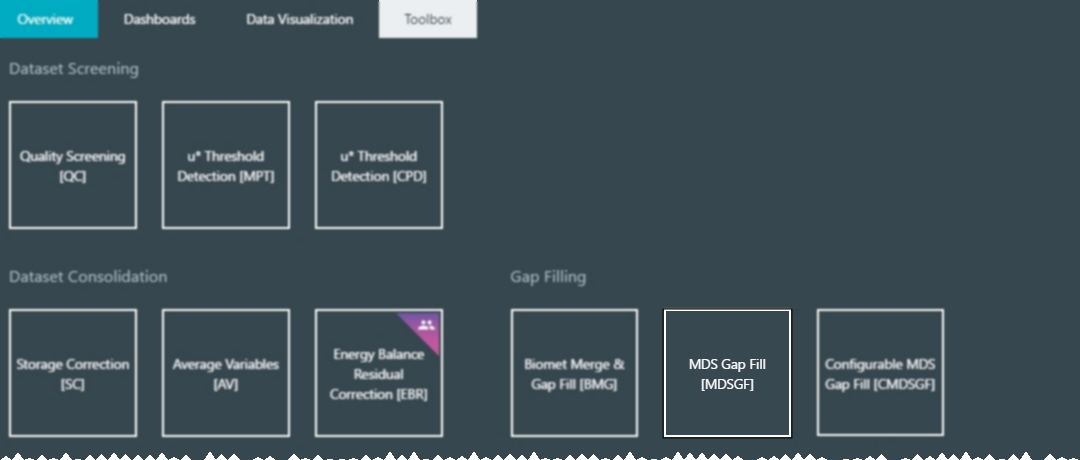The MDS Gap Fill (MDSGF) tool performs gap filling of fluxes using the Marginal Distribution Sampling technique. This technique—and, in fact, the code used in Tovi—is the same exact code used to generate the Fluxnet2015 synthesis data. The MDSGF tool uses the correlation of fluxes with the driver variables, namely, light, moisture, and temperature to estimate the flux values during the gap periods. You need a dataset that contains at least one of the following variables: FCO2, LE, or H; and a visual gap in the data for one or more of these variables. To use the gap filling tool:
- In Overview > Analysis History, select the node to modify and click Toolbox > MDS Gap Fill.
- Select one or more variables to gap fill from the box.
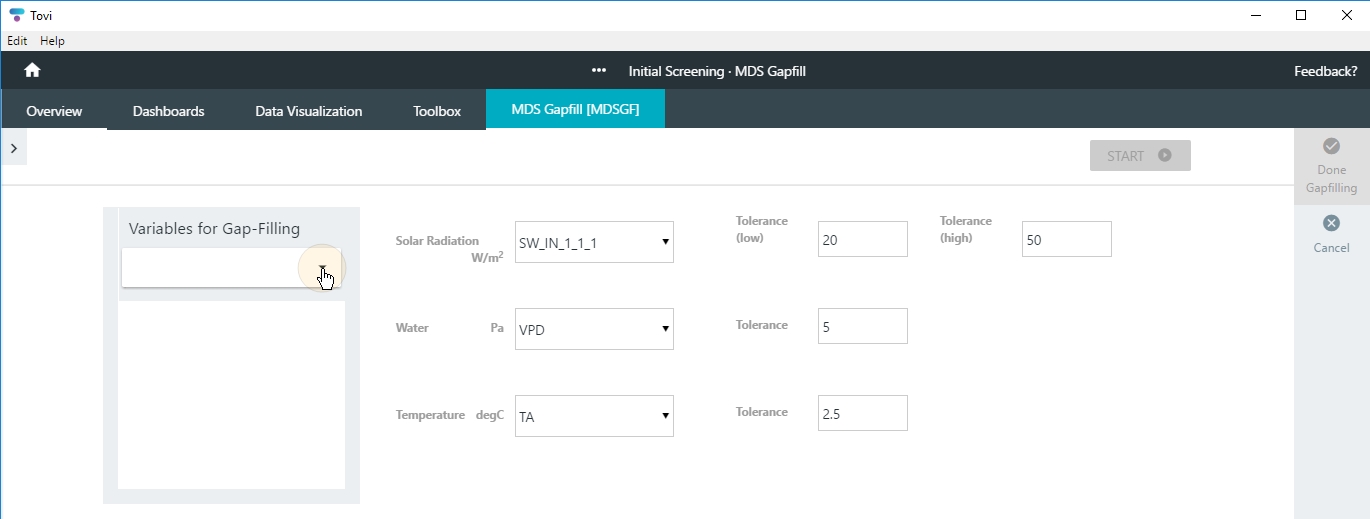
- Adjust the selection of driver variables and their tolerance levels.
- Driver variables are ones that can be used in the gap filling procedure.
- Click the Start button (
 ) to initiate the gap filling procedure.
) to initiate the gap filling procedure. - When finished with the gap filling Tovi will show a chart of the original data and the filled sections in different colors. You can hide and show each variable to see where gaps were filled in the timeline. If you want to adjust the gap fill parameters, click the Back to Settings button.
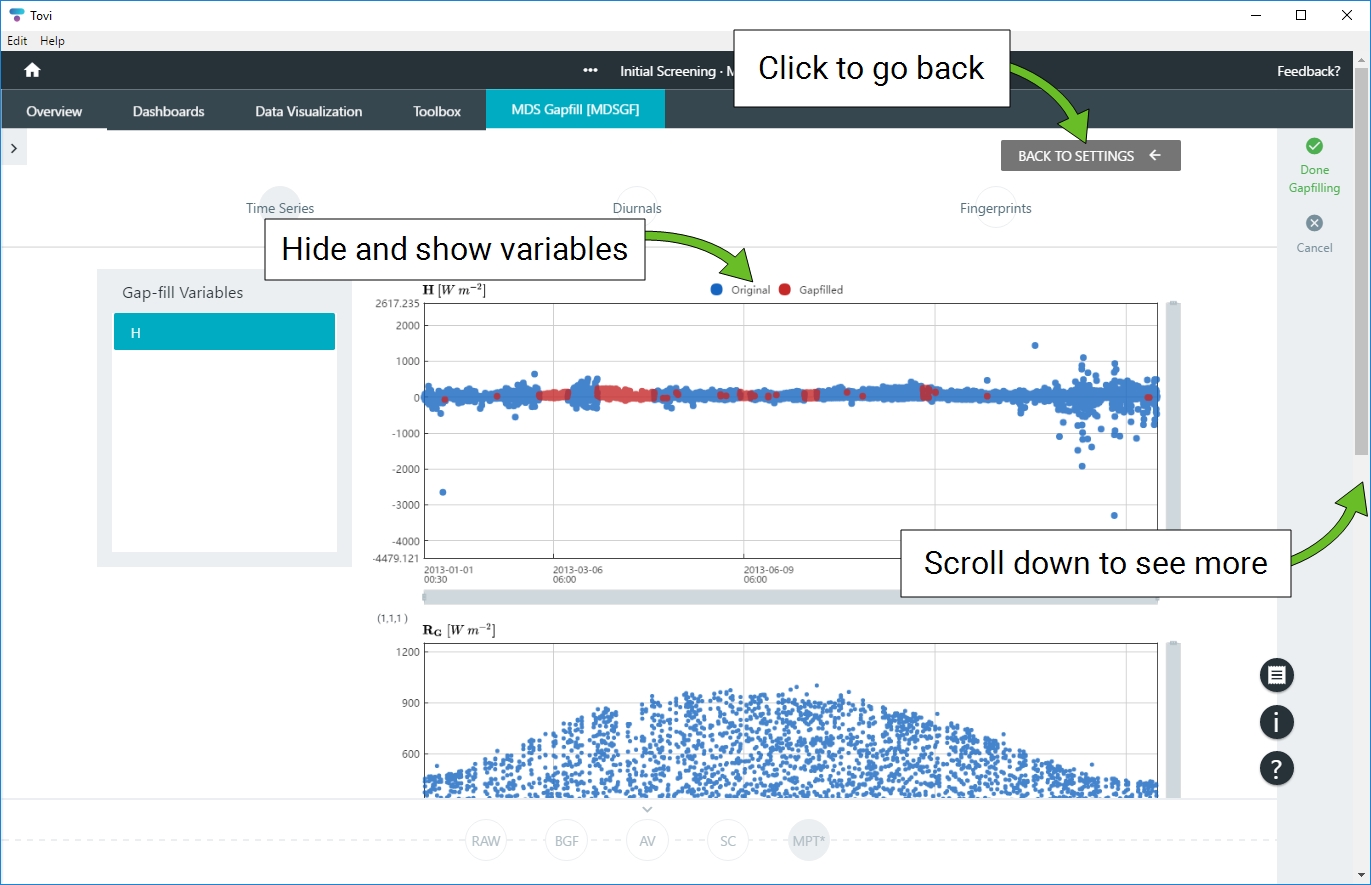
- You can zoom in, zoom out, and save an image of the chart.
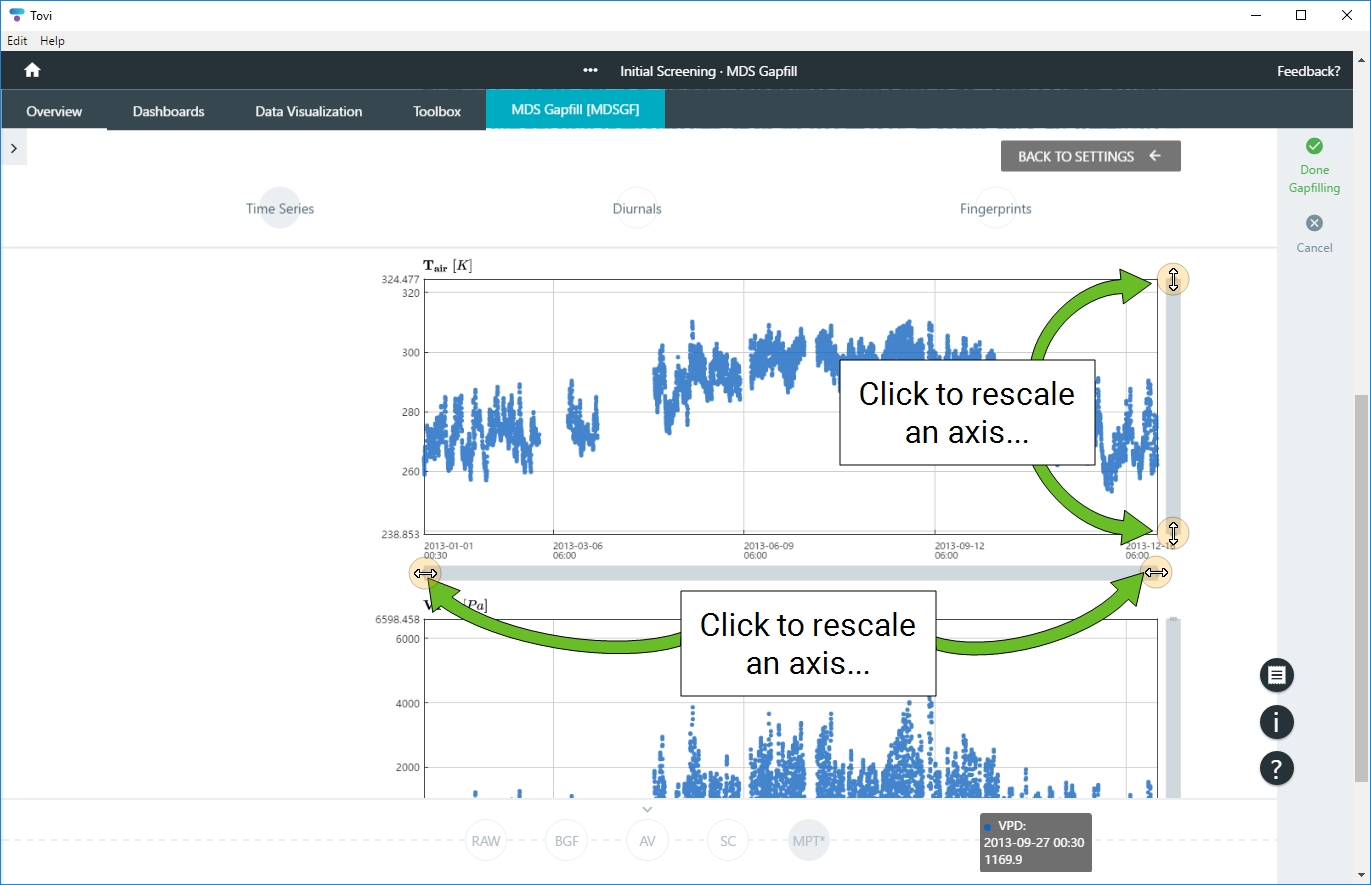
- Click Diunals to examine the filled data set in more detail.
- You'll see charts of data grouped by month. You can rescale the charts:
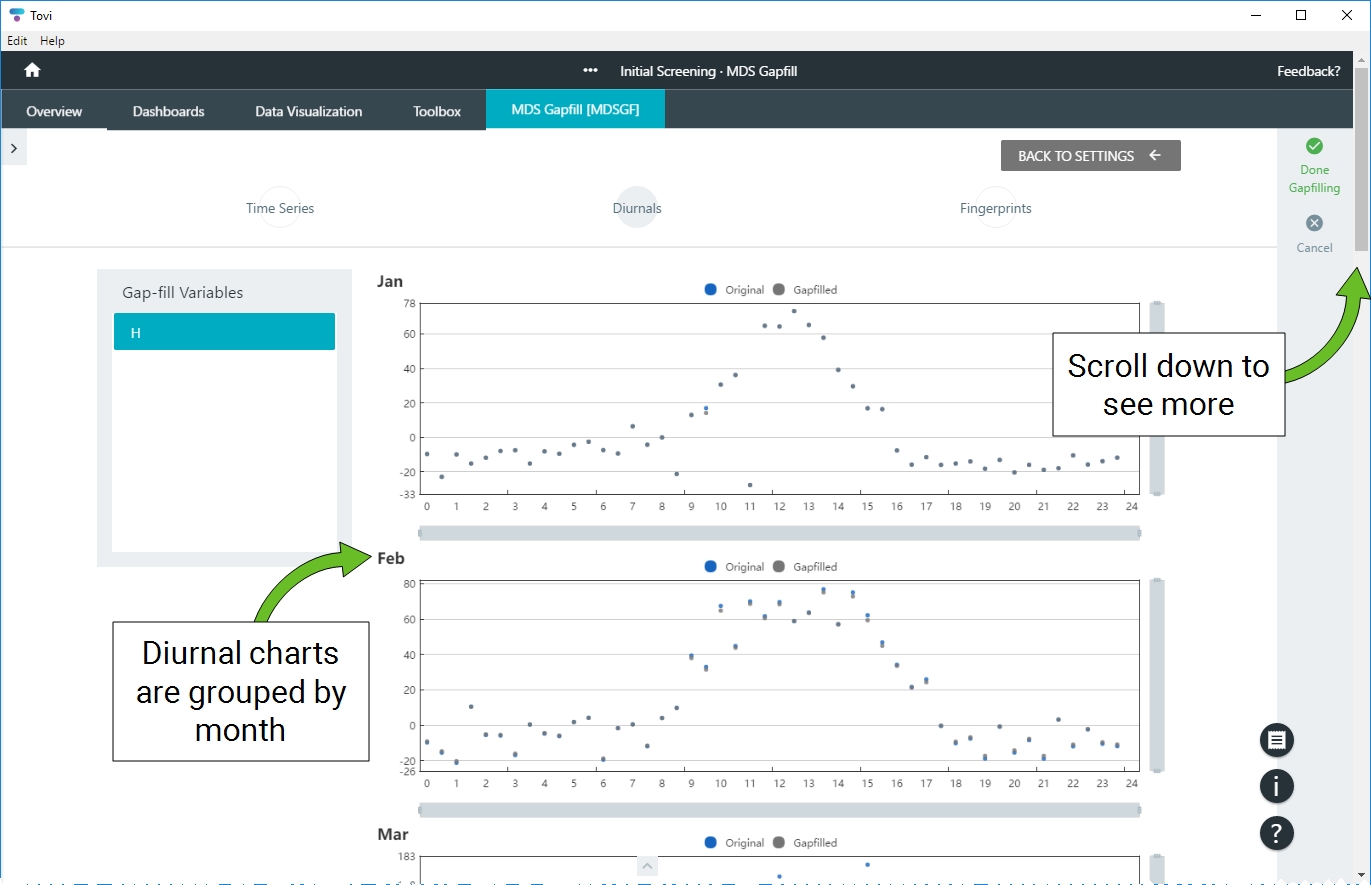
- Click Fingerprints to view the original and gap filled datasets.
- The fingerprint shows daily data in stacked rows. You can adjust the range with the sliders.
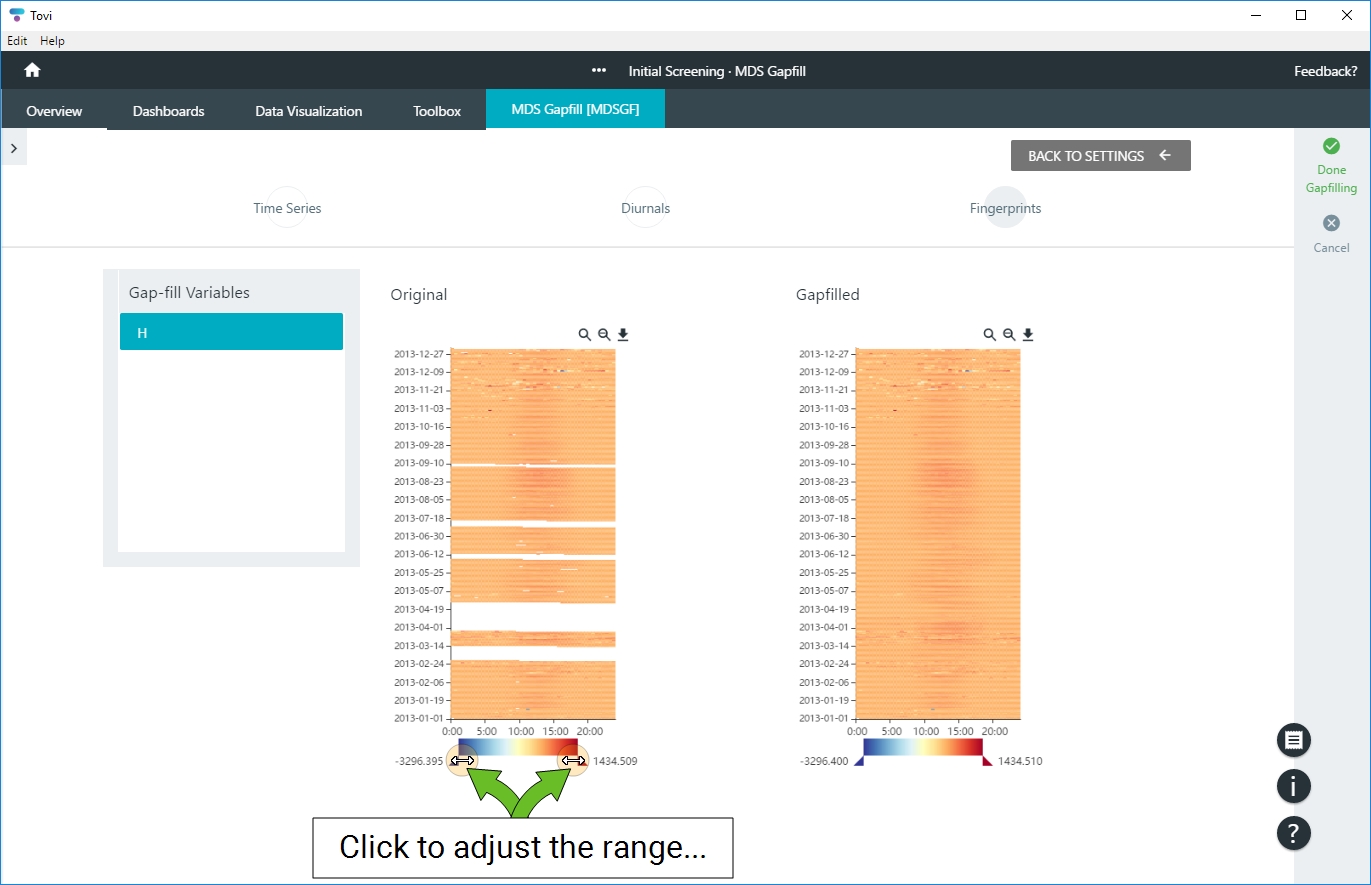
- If you are satisfied with the gap filling, click Done Gap filling.
- Name the exercise when prompted. The Analysis will be updated with copy of the data set that has been gap filled.
At this point you may want to check the quality flagging of the gap filled data. Return to the Overview, select the node that represents the quality flagging, and click Toolbox > Quality Screening. The gap filled variables will be available to apply the filter (see Screening based on MDSGF (Marginal Distribution Sampling) gap fill flags).

